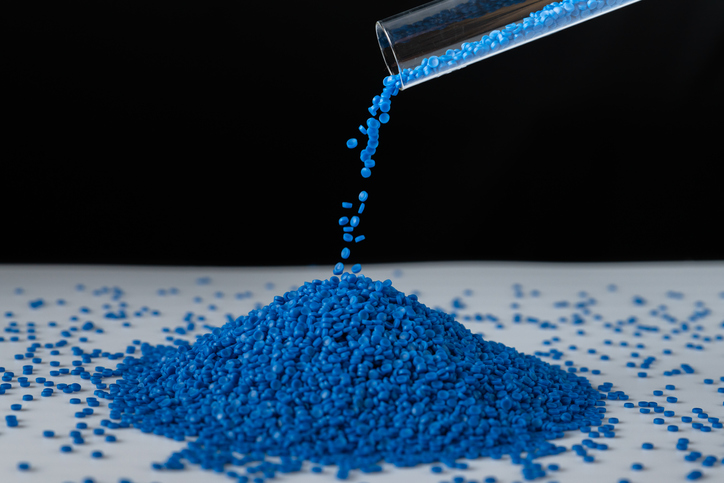Plastic components for applications in aerospace, wind energy, automotive, and other industries with demanding environments require advanced polymers. The strength-to-weight ratio and excellent fatigue, heat, and corrosion performance make engineering and high-performance polymers popular choices to meet the challenges intrinsic to these applications.
Engineering and high-performance polymers often require annealing or post-curing to achieve the required properties. Companies must work with a plastic component manufacturer with the necessary experience and equipment for these processes.
Understanding Plastics
Before discussing annealing and curing, a brief overview of plastics is required. The primary chemical structures for plastics are crystalline, amorphous, and semi-crystalline. Crystalline plastics have polymer chains locally aligned into an ordered pattern called lamellae. They maintain their properties when heated until they reach their glass transition temperature (Tg). Conversely, the polymer chains of an amorphous plastic have no linear structure and are randomized and tangled. They begin to melt as soon as heat is applied, losing their physical characteristics. A semi-crystalline plastic is in between and can have 10% – 80% crystalline alignment with the remaining amorphous. Some manufacturing processes can be used to influence the amount of crystallization.
There are two main types of polymers used for machining and injection molding: thermoplastic and thermoset. These polymer categories react differently when heated. Thermoplastics become fluid when heated and solidify when cooled so they can be easily molded. This process is reversible as no chemical bonding takes place, allowing for remelting for molding and recycling. They can be crystalline, amorphous, or semi-crystalline.
Thermosets are also moldable but require curing to chemically crosslink the chains, meaning the molecular chains are interconnected through strong covalent bonds that create a rigid three-dimensional network. Once cured, thermosets cannot be remelted or reshaped; the process is irreversible. If further heated, they will degrade rather than melt. Thermosets are generally considered to be amorphous.
The Importance of Annealing Plastics
Annealing is a heat treatment method used to eliminate any unacceptable stress that may result from the manufacturing process, improve dimensional stability, or increase the degree of crystallinity.
The annealing of amorphous polymers primarily aims to relieve internal stresses and improve dimensional stability. The process involves heating the polymer below Tg, which allows the polymer chains to rearrange in a more relaxed state without significant changes in overall molecular orientation. This can lead to improved clarity, reduced brittleness, and enhanced mechanical properties. However, since amorphous polymers lack a crystalline structure, annealing doesn’t lead to crystallization but improves the existing amorphous structure.
For crystalline polymers, annealing can lead to an increase in the degree of crystallinity. The process involves heating the polymer to a temperature near or above its glass transition temperature but below its melting point. This facilitates the movement of polymer chains, allowing them to align and pack more orderly into crystalline structures. Increased crystallinity typically results in higher strength, stiffness, and chemical resistance but may decrease transparency and impact resistance.
Semi-crystalline polymers, containing both amorphous and crystalline regions, can also benefit from annealing. The process can enhance the degree of crystallinity and reduce internal stresses in the amorphous areas. The improved crystallinity can enhance properties like tensile strength and chemical resistance, while stress relief in amorphous regions can improve ductility and reduce brittleness.
Annealing plastics improves the component’s characteristics, such as strength and chemical resistance, and increases dimensional stability over a wide temperature range. Annealing can be used for materials before extensive machining to ensure tight tolerances can be met without warping the product.
Annealing of thermoplastics involves heating the material to a specific temperature below its melting point and then cooling it down slowly. Precise temperature control is important to prevent melting or deformation and ensure the internal stresses are adequately relieved.
Curing of Thermoset Plastics
Curing of thermosets involves a chemical reaction that creates crosslinks between polymer chains, transforming the material from a soft or liquid state into a hard, infusible solid. Post-processing curing is a critical step for developing the optimum physical properties of the part.
This crosslinking results in a highly networked, three-dimensional structure. The process doesn’t lead to crystallinity; instead, it creates a rigid, often amorphous network that imparts high thermal stability, chemical resistance, and mechanical strength. Unlike annealing, curing is an irreversible chemical change. Once cured, the structure of the thermoset cannot be remelted or reshaped.
Curing thermoset polymers often requires precise temperature control to initiate and complete the crosslinking process. Curing ovens must maintain a consistent uniform temperature, have a controlled ramp-up and cool-down cycle, and sometimes provide a specific atmosphere (like inert gas) to prevent unwanted reactions. Specialized curing ovens are often used, especially for large or complex parts or when production efficiency and consistency are critical.
Ensinger: The Plastic Experts
Thermoplastic and thermoset machining and injection molding require specialized knowledge and experience and, in some cases, equipment modification and specialized ovens, causing many plastic part manufacturers to shy away from working with some of these materials. As experts in plastic engineering, we won’t turn you away when your application is challenging. In fact, we strive to be your go-to source for solving tough challenges.
As part of the Ensinger Group network, we have a vast system of plastics experts familiar with various processing techniques, manufacturing, and applications at our fingertips, allowing us to provide an optimal solution. Contact us to get the conversation started.
